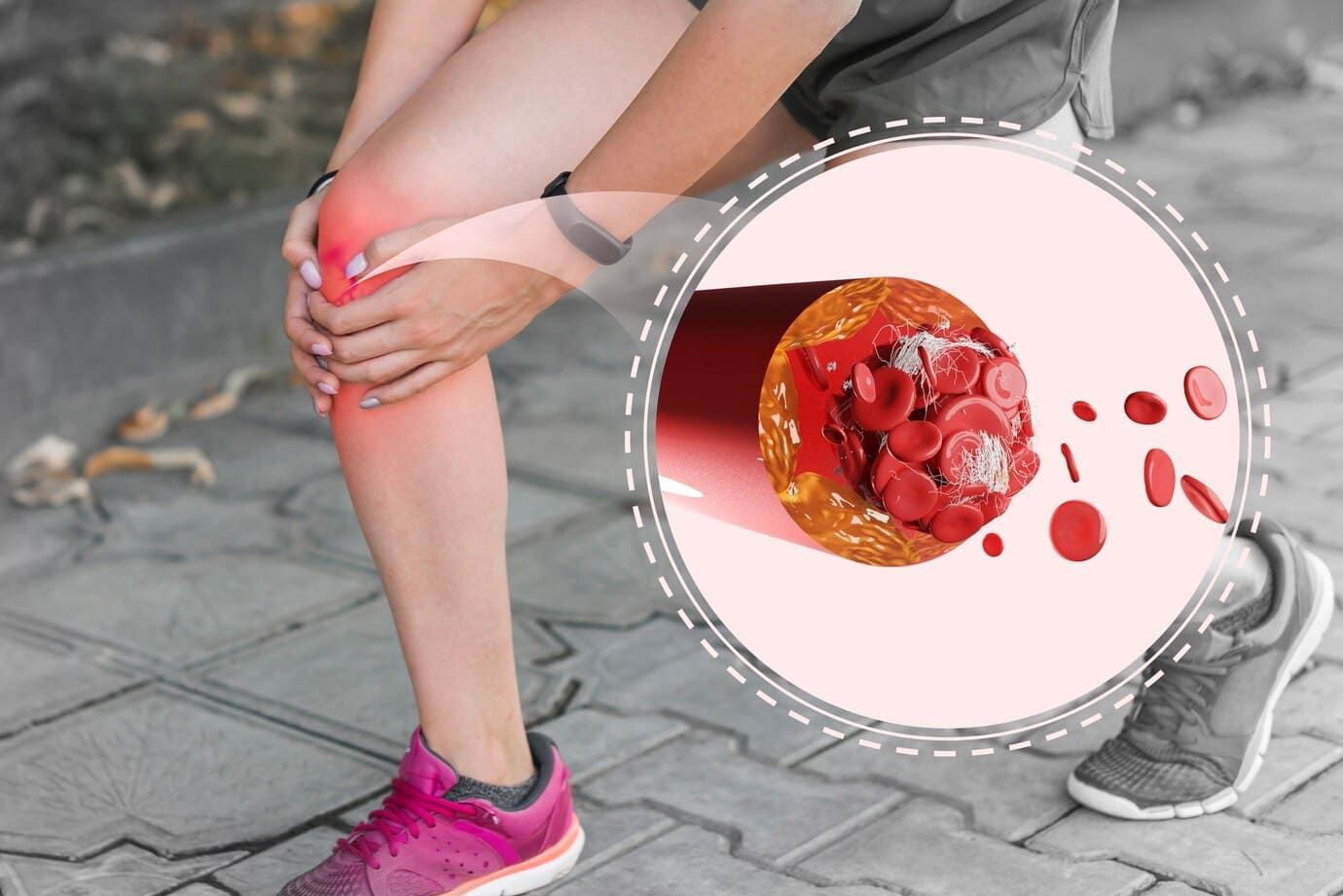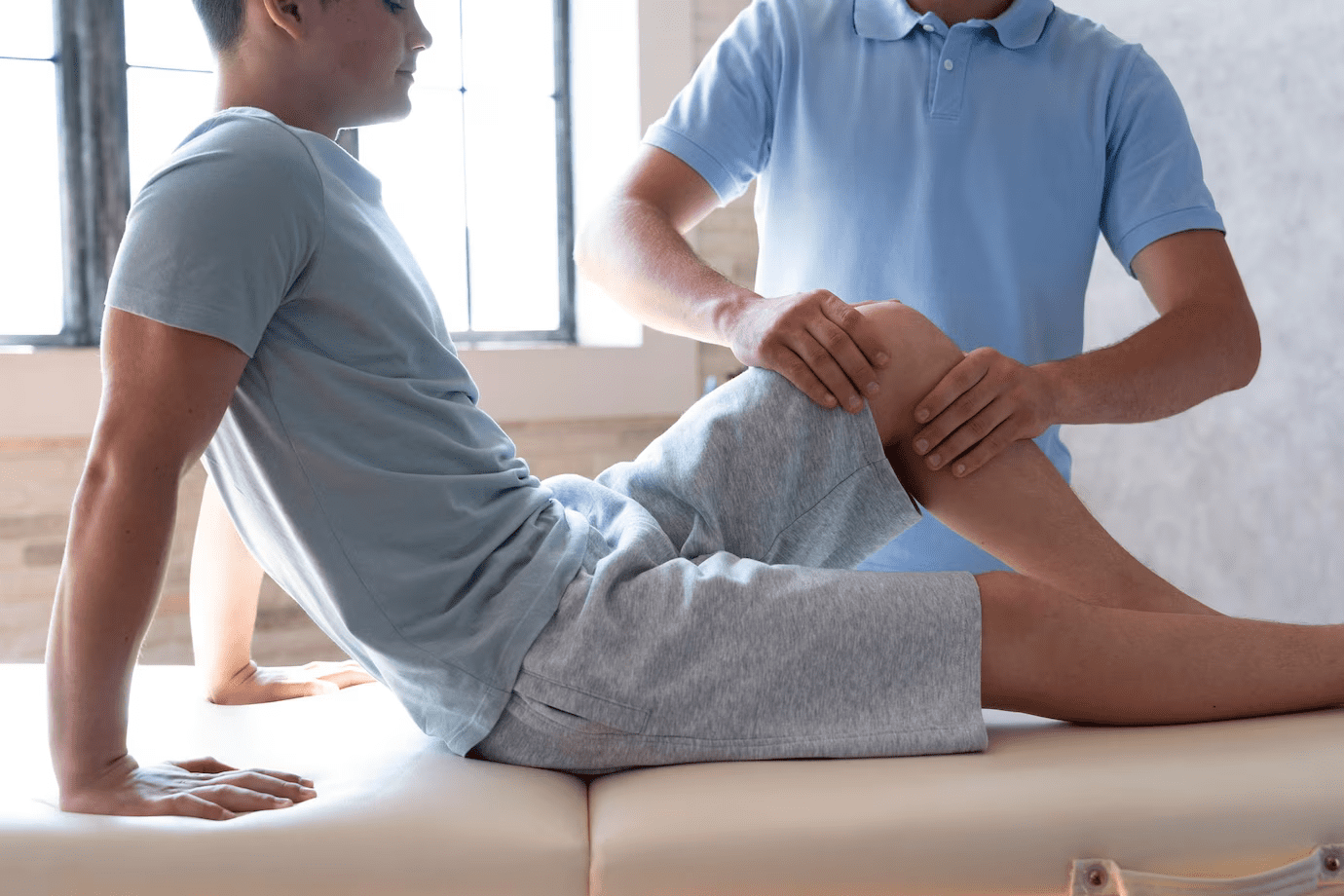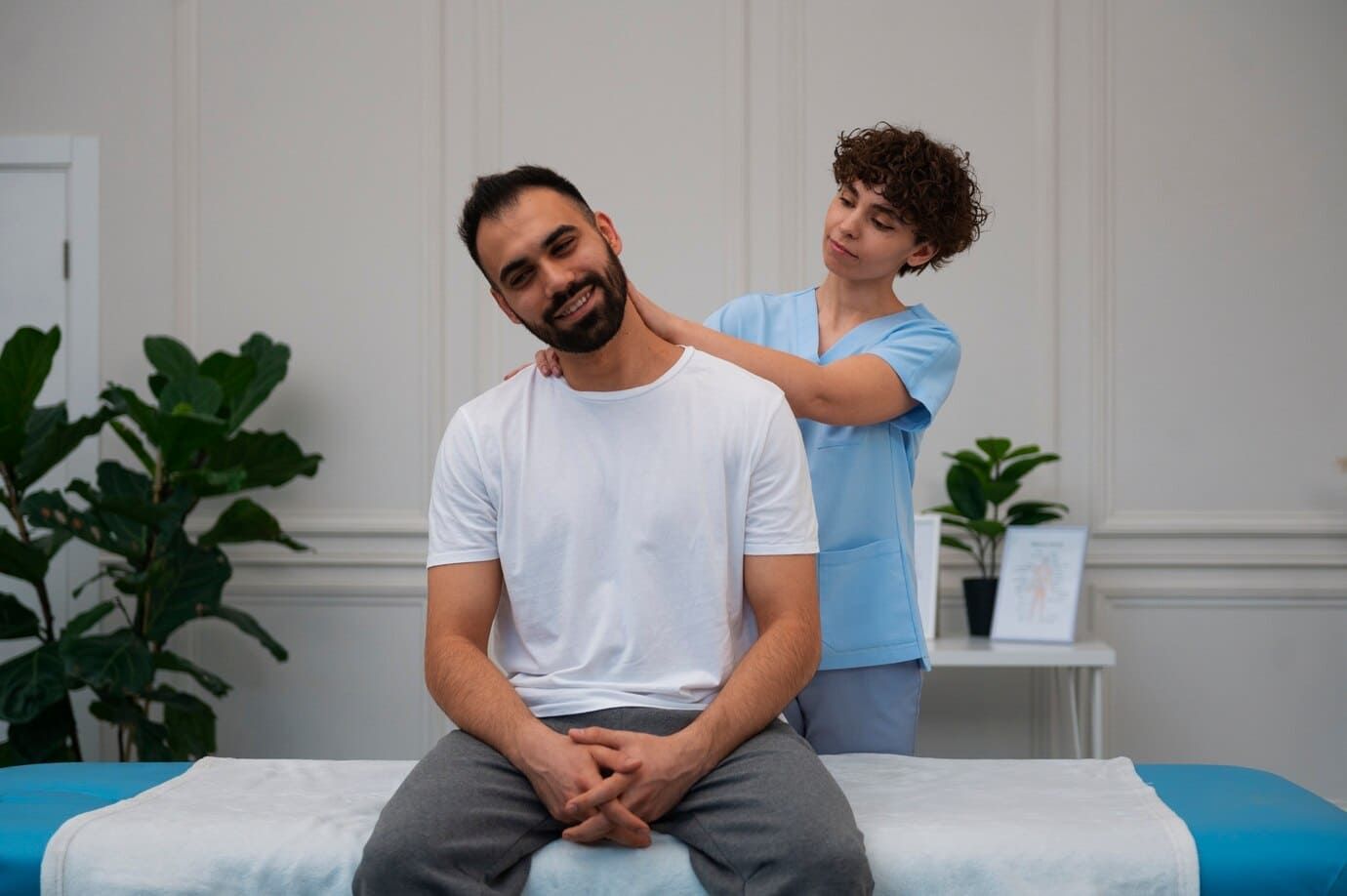Blog
At Advanced Clinical Physiotherapy, we are committed to sharing knowledge and empowering clients to learn more about their health.

Understanding Osteoporosis What is Osteoporosis? Osteoporosis is the most common bone disease in the world. It causes bones to become weaker and more likely to break (fracture). It’s often called a "silent disease" because people usually don’t know they have it until they break a bone. Who Is Most at Risk? Older age: The risk increases as you get older. Gender: Up to 38% of women over 50 have osteoporosis. Around 3–8% of men over 60 are affected. Postmenopausal women are at the highest risk. Does Osteoporosis Hurt? Usually, no. You won’t feel any pain unless you’ve had a fracture. Common fracture sites include: Hip (neck of femur) Spine Wrist (radius) Upper arm (humerus) Sometimes, a small injury or fall can cause a big fracture, especially if your bones are very weak. What Does the Pain Feel Like (if there is a fracture)? Pain may be sharp or dull, and sometimes radiates to other areas. You might still not feel much pain, especially with spine fractures. Pain usually settles within 6 to 12 weeks. Nerve symptoms can occur if a fracture affects nearby nerves. How Does Osteoporosis Affect Daily Life? If no fracture has happened, you might feel completely fine. Some people become less active out of fear of falling, which can make bones and muscles even weaker. A walking aid (like a stick or frame) may help improve safety and confidence. Hip fractures, especially in older people, can lead to serious issues: 25% may need full-time care. 20% may pass away within a year due to complications. What Makes the Pain Worse or Better? Worse with: Putting weight on the area Certain joint positions After activity or by the end of the day Better with: Resting or avoiding weight on the area Sitting or lying in comfortable positions Usually not too bad in the morning How Is Osteoporosis Diagnosed? Often diagnosed by a bone scan (DXA), which checks your bone density. You may be referred for a scan if: You’ve had a fracture from a minor fall. You have risk factors for weak bones. A T-score from the scan shows: Between -1 and -2.5: Osteopenia (low bone mass) Less than -2.5: Osteoporosis Less than -2.5 plus fractures: Severe osteoporosis What Increases My Risk of Osteoporosis? Things you can’t change: Age Gender Family history Hormonal issues or other medical conditions Things you can change: Low body weight Smoking Heavy alcohol use Poor diet (especially low calcium and vitamin D) Lack of physical activity Certain medications (like long-term steroids) What Can Be Done About It? 1. Diet and Nutrition Eat a healthy, balanced diet. Make sure you’re getting enough calcium and vitamin D. Keep your body weight in a healthy range. 2. Exercise Aim for at least 30 minutes of activity, 5 days a week. Include weight-bearing and balance exercises to keep bones strong and prevent falls. The sooner you start, the more benefit you'll get. 3. Medications Some medications can help slow down bone loss or build new bone. Your doctor might suggest options like: Bisphosphonates Hormonal medications Calcium and vitamin D supplements 4. Fall Prevention Make your home safer (e.g., remove trip hazards, improve lighting). Use the right footwear and mobility aids if needed. Have your vision, balance, and strength checked regularly. Your physiotherapist may assess your walking and balance, and suggest helpful exercises or equipment. What’s the Outlook? The earlier it’s found, the better. You can take steps to slow bone loss and prevent fractures. There is no cure, but good treatment can help manage the condition. Fractures can be serious, especially in older adults—so it's important to act early and reduce risks. Need More Help? Talk to your GP or physiotherapist if: You’ve had a fall or fracture recently. You’re worried about your bone health. You’re at risk and want to know more about prevention.

We are lucky to have several places to exercise and stay active in Altona. Here are some popular options: Altona Beach: Altona Beach is a great place for outdoor activities and exercise. You can go for a run or a brisk walk along the beachside promenade. There are also facilities for swimming and water sports. Cherry Lake: Cherry Lake is an open park and lake area in Altona. It has walking and cycling paths around the lake, making it a perfect spot for jogging, cycling, or taking a leisurely stroll. Truganina Park (Including the 100 Steps): Truganina Park is a large green space with walking trails, a playground, and open areas for picnics and sports. It’s a great place to enjoy outdoor activities like jogging, playing sports, or doing bodyweight exercises. Altona Coastal Park: This park offers a natural environment with walking and cycling trails along the coast. It’s an ideal location for birdwatching, hiking, and enjoying the serene surroundings. Altona Sports Centre: If you prefer indoor exercise options, the Altona Sports Centre is a facility that offers various ways the participate in leading the community in social sports. Local Gyms and Fitness Centers: Altona also has several gyms and fitness centers where you can work out using various equipment and join group fitness classes. Running and Cycling Routes: Altona has plenty of sidewalks and streets suitable for running and cycling. Explore the neighborhood and find your preferred routes for outdoor exercise. The most popular is the yellow brick road which provides a safe path for people of all ages and levels of confidence. Remember to check the opening hours, availability, and any membership requirements for the specific exercise facilities you plan to visit in Altona. Additionally, consider the weather and personal preferences when choosing the best place to exercise or access physio services in Altona .

Recovery after physical activity is essential to maintaining overall health and performance. Several types of evidence support the importance and benefits of recovery after engaging in physical activities: Physiological Changes: During exercise, the body undergoes various stress responses such as increased heart rate, muscle fatigue, and energy depletion. Recovery allows the body to return to its normal state by restoring energy stores, repairing damaged tissues, and reducing the stress response. Reduced Risk of Overuse Injuries: Inadequate recovery can lead to overuse injuries. This is due to the body having a reduced capacity after completing exercise. It is important to recognize signs of overuse injury and plan accordingly to minimize risk. Enhanced Performance: Studies on athletes and sports teams have shown that incorporating effective recovery strategies can significantly improve athletic performance. Adequate recovery allows athletes to train more effectively and perform at their best. Muscle Growth and Repair: After resistance training or strength workouts, muscles need time to repair and grow stronger. During the recovery period, it is crucial for muscle protein synthesis to occur in order to benefit from the prior exertion. Hormonal Balance: Physical activity can temporarily disrupt hormonal balance, particularly in endurance athletes. Adequate recovery helps restore hormonal balance, which is important for overall health and well-being. Reduction of Delayed Onset Muscle Soreness (DOMS): Research indicates that proper recovery strategies, such as stretching, massage, and foam rolling, can help alleviate delayed onset muscle soreness (DOMS) that often occurs after strenuous exercise. Immune System Support: Intense and prolonged physical activity can temporarily weaken the immune system. Evidence suggests that adequate recovery helps support and strengthen the immune system. Mental Health Benefits: Engaging in relaxing activities during the recovery period, such as meditation or mindfulness exercises, has been shown to reduce stress and anxiety associated with physical activity and improve overall mental well-being. Recovery should be tailored depending on the type, intensity, and duration of physical activity, as well as individual factors like age, fitness level, and overall health. Consult a clinical physiotherapist in Altona for personalized guidance.

Evidence-based recovery strategies are approaches that are supported by research and have shown effectiveness in promoting physical and mental recovery. Rest and Sleep: Quality Sleep: Adequate and high-quality sleep is one of the most critical recovery strategies. Aim for 7-9 hours of sleep per night, as it is when the body undergoes significant repair and regeneration. Nutrition: Protein Intake: Consuming protein-rich foods or supplements after exercise can support muscle repair and growth. Carbohydrates: Replenishing glycogen stores with carbohydrates is crucial for endurance athletes. Anti-Inflammatory Foods: Foods rich in antioxidants and anti-inflammatory properties, such as fruits and vegetables, can aid in reducing inflammation. Hydration: Staying well-hydrated is essential for overall recovery. Stretching and Flexibility: Static Stretching: Gentle static stretching may help improve flexibility and reduce muscle tension. Stretch after exercise when muscles are warm. Foam Rolling: Using a foam roller on muscles can help reduce muscle soreness and improve flexibility. Self-Massage Tools: Tools like massage sticks or balls can also be effective in targeting specific muscle groups. Active Recovery: Low-Intensity Activity: Engaging in low-intensity activities like walking or cycling on rest days can promote blood circulation and facilitate recovery. Hydrotherapy: Cold Baths/Ice Baths: Cold water immersion has been shown to reduce muscle soreness and inflammation after strenuous exercise. Contrast Water Therapy: Alternating between hot and cold water can help with muscle recovery, reduce muscle soreness, and improve circulation. Compression: Sleeves or Socks: These garments can aid in reducing muscle vibration and promoting blood circulation, potentially reducing muscle soreness. Mindfulness and Relaxation: Meditation and Yoga: Mindfulness practices can help reduce stress and promote mental recovery. Deep Breathing Exercises: Focusing on deep, slow breaths can help calm the nervous system. Periodization and Training Planning: Proper training planning that includes periodization can prevent overtraining and ensure adequate recovery between workouts. Psychological Recovery: Manage stress and mental fatigue through relaxation techniques, stress-reduction strategies, and mental health support when needed. Recovery should be tailored depending on the type, intensity, and duration of physical activity, as well as individual factors like age, fitness level, and overall health. Explore how physiotherapy services in Altona can enhance your recovery journey.

Hydrotherapy, also known as aquatic physiotherapy or water therapy, is a complementary therapy that uses the properties of water to promote healing, rehabilitation, and pain management. It is frequently prescribed by physiotherapists and provides a number of benefits for people suffering from musculoskeletal disorders, neurological impairments, and chronic pain. In the warm, buoyant environment of a therapy pool, individuals can perform exercises with greater ease and comfort compared to land-based exercises. The buoyancy of water reduces weight-bearing on joints, allowing for pain-free movement and improved range of motion. Additionally, the resistance of water provides a gentle challenge for muscle strengthening exercises. Hydrotherapy offers a multitude of benefits for individuals undergoing physiotherapy. These benefits include: Benefits of Hydrotherapy in Physiotherapy Here are some of the key benefits of hydrotherapy: Pain Management: H ydrotherapy can provide effective pain relief for a wide range of conditions, including arthritis, muscle soreness, and joint pain. The buoyancy of water reduces the impact on joints, making it easier to exercise and move without discomfort. Improved Circulation: The warm water in hydrotherapy sessions promotes better blood flow, which, in turn, enhances the delivery of oxygen and nutrients to injured or aching muscles. This can speed up the healing process. Muscle Relaxation: Hydrotherapy induces muscle relaxation, which is particularly beneficial for those with muscle tension, spasms, or stiffness. The warm water and gentle pressure can help ease muscle discomfort. Enhanced Range of Motion: Regular hydrotherapy sessions can improve your flexibility and range of motion. This is especially important for individuals recovering from injuries or surgeries. Stress Reduction: The soothing nature of hydrotherapy can also have a positive impact on your mental health. It helps reduce stress and promotes a sense of relaxation and well-being. Weight Management: Hydrotherapy provides a low-impact environment for exercise, making it a great option for those looking to manage their weight while minimizing stress on the joints. To make the most of hydrotherapy, it’s essential to consult a qualified clinical physiotherapist. They will create a personalized treatment plan customized to your specific needs. Hydrotherapy sessions typically involve a combination of exercises and activities performed in a controlled aquatic environment. Conclusion f you’re looking to enhance your well-being and accelerate your recovery, NDIS hydrotherapy services is a powerful tool that can make a significant difference in your life. Consult with a clinical physiotherapist in Altona to explore how hydrotherapy could be used to achieve your goals!

Making physiotherapy easier to understand is the best way to make it more accessible for people who may not know much about it. This can be done by providing clear information about what physiotherapy is, what it can do, and how it can help individuals. It’s also helpful to dispel common misconceptions, like thinking it’s only for serious injuries or that it’s a difficult or uncomfortable experience. Physiotherapy is a type of healthcare that focuses on improving your body’s movement and abilities. If you’ve ever had aches, pains, or trouble moving, a physiotherapist is the expert to turn to. The Important Role of Physiotherapists in Healthcare Physiotherapists play a major role in healthcare, contributing significantly to people’s happiness and well-being. They are not just experts in movement; they are essential partners in the journey to optimal health. Movement Specialists: Physiotherapists understand how the body moves. Whether you’re dealing with injuries, recovering from surgery, or managing a chronic condition, they can guide you toward better movement and functionality. Personalized Care: Physiotherapists recognize that everyone is unique. They provide personalized care and appropriate treatment tailored to your specific needs, including targeted exercises, stretches, and lifestyle changes that fit into your daily routine. Rehabilitation Guides: In cases of injury, surgery, or other health challenges, physiotherapists act as crucial guides for recovery. They create organized recovery plans, offering exercises and treatments to rebuild strength, flexibility, and overall well-being. Pain Management Experts: Persistent pain can significantly impact quality of life. Physiotherapists are skilled at pain management, identifying the underlying causes of discomfort and implementing strategies to relieve pain through exercises, manual therapy, and other beneficial interventions. Preventive Care Advocates: Physiotherapists focus not only on treating existing issues but also on preventive care. By providing education and guidance, they empower individuals to take proactive measures, reducing the risk of future injuries and maintaining their overall health. Collaborative Approach: Healthcare is a team effort, and physiotherapists understand the importance of working closely with other healthcare professionals. They communicate with doctors, specialists, and other experts to ensure a comprehensive and integrated approach to your health. Patient Empowerment: Beyond physical therapy, physiotherapists empower patients to take control of their health. Through education and support, people gain a deeper understanding of their bodies, learning how to manage conditions independently and make lifestyle choices that promote long-term well-being. Holistic Health Advocates: Physiotherapists view health in a holistic way, recognizing the interconnectedness of physical, mental, and personal well-being. Their approach goes beyond symptom management, aiming to enhance overall quality of life. Types of Physiotherapy There are various types of physiotherapy, but some common ones include: Musculoskeletal physiotherapy: Focuses on the assessment, diagnosis, treatment, and prevention of conditions affecting the external muscle system, including muscles, bones, joints, and tendons. Neurological physiotherapy: Concentrates on the assessment, diagnosis, treatment, and prevention of conditions affecting the nervous system, including the brain, spinal cord, and nerves. Cardiothoracic physiotherapy: Targets the assessment, diagnosis, treatment, and prevention of conditions affecting the heart and lungs. Conclusion: Physiotherapy isn’t a mystery; it’s a service that is tailored to support individuals in achieving their goals. The next time you experience aches, pains, or movement challenges, remember that the clinical physiotherapist in Altona is a friendly expert ready to guide you back to the best version of yourself. It’s all about understanding, moving, and living your best, happiest life.

The National Disability Insurance Scheme (NDIS) is here to support individuals with disabilities in Australia. If you’re in Altona or the western suburbs of Melbourne and seeking physiotherapy services under the NDIS, this blog will guide you through the process of accessing the care you need. What is the NDIS? The NDIS is a government program designed to assist people with disabilities by providing funding for necessary services and support. This includes physiotherapy, which can be incredibly helpful for managing pain, improving function and sustaining an enhanced overall quality of life. Who is Eligible for NDIS? To be eligible for NDIS, you must meet the following criteria: Have a permanent disability that significantly impacts your ability to participate in everyday activities. Be under the age of 65. Be an Australian citizen or permanent resident. What Support Does NDIS Provide? The NDIS provides a range of supports to people with disability, including: Assistance with daily living: This includes help with tasks such as dressing, bathing, and eating. Therapy: This includes physiotherapy, occupational therapy, and speech therapy. Equipment and home modifications: This includes wheelchairs, ramps, and home modifications that make it easier to live independently. Respite support: This includes help with caring for someone with a disability. How to Access Physiotherapy Services through NDIS in Altona Step 1: Determine Your Eligibility Before accessing NDIS-funded physiotherapy, you need to make sure you’re eligible for the NDIS. The NDIS is available for individuals who meet certain criteria and have a disability that significantly impacts their daily life. Step 2: Create a Plan If you’re eligible for the NDIS, the next step is creating an NDIS plan. Your plan outlines your specific needs and goals, including any physiotherapy services required. Step 3: Find an NDIS Physiotherapist in Altona You’ll want to work with a NDIS physiotherapist in Altona that is experienced in providing services to NDIS participants, and their fees are in alignment with your NDIS plan. Step 4: Discuss Your Needs Meet with your chosen physiotherapist and discuss your needs, goals, and any specific challenges you face due to your disability. They will assess your situation and create a tailored plan to help you achieve the best results. Step 5: Implement Your Plan Once your plan is in place, you can begin receiving physiotherapy services. Your physiotherapist will work with you to address your mobility, pain management, and other concerns, all with the goal of improving your well-being. Step 6: Ongoing Support Physiotherapy is often an ongoing process. Your physiotherapist will work with you to ensure you’re making progress and to make any necessary adjustments to your plan. What to Expect at Your First Physiotherapy Appointment At your first physiotherapy appointment , the physiotherapist will ask you about your disability and your pain. They will also assess your mobility and range of motion. Based on your assessment, the physiotherapist will develop a personalized treatment plan for you. How Much Does Physiotherapy Cost? The cost of physiotherapy will vary depending on your individual needs. However, if you are an NDIS participant, your NDIS plan will cover the cost of your physiotherapy services. Conclusion: Discover the transformative power of NDIS physio in Altona ! Accessing physiotherapy services through the NDIS is a process that can significantly improve your quality of life. It’s all about helping you achieve your health and active goals!

Engaging in sports is a fantastic way to stay active and healthy, but occasionally injuries come with the territory. Whether you are a seasoned athlete or just enjoy playing sports for fun, understanding common sports injuries and how a sports physiotherapist can aid in recovery is pivotal. Let’s explore the world of sports injuries and discover how seeking sports physiotherapy services in Altona can be a game-changer for your mending trip. Sprains and Strains: These are among the most common sports injuries, often affecting muscles and ligaments. Sports physiotherapy helps in reducing pain and swelling and promotes proper healing through targeted exercises and therapies. Fractures: Broken bones can be, especially in high-impact sports like AFL and soccer. Sports physiotherapy plays a pivotal part starting at imobilisation, aiding in recovering strength and mobility through recuperation exercises. Tendonitis: Overuse of tendons can lead to inflammation and pain. Sports physiotherapy provides technical treatments to alleviate discomfort and help further strain on the tendons. Concussions: Head injuries in sports bear careful attention. Sports physio services in Altona include comprehensive assessments and protocols to insure a safe and gradual return to physical exertion after a concussion. Dislocations: Joints can become dislocated during violent sports conditioning. Sports Physiotherapy aids in the recuperation process, focusing on strengthening the affected area and preventing recurrent injury. How Sports Physiotherapy Helps Sports physiotherapy in Altona is designed to address these common sports injuries through: Personalized Treatment Plans: Tailored exercises and therapies to address specific injuries and promote optimal recovery Pain Management: Techniques to manage and palliate pain, enhancing comfort during the healing process Injury Prevention: Guidance on activations, warm-ups, recovery, and exercises to help future injuries. Rehabilitation Exercises: Targeted exercises to rebuild strength, flexibility, and overall functionality. Conclusion: In the realm of sports injuries, sports physiotherapy in Altona emerges as a critical guide in your journey to recovery. Whether you are dealing with a sprain, fracture, or any other sports-related disease, seeking the expertise of sports activity services can make a significant difference in your healing process. Ready to explore the benefits of sports activity in Altona? Visit Advanced Clinical Physiotherapy to learn further about our services and kickstart your journey to a healthier, pain-free you!

When it comes to recreating your health and overall wellbeing, physiotherapy is frequently the key. In Altona, there is a range of physiotherapy treatments that provide colorful requirements, from injury recovery to maintaining a healthy life. Let’s dive into the top 10 physiotherapy treatments that can make a significant difference in your trip to healing: Manual Therapy: Applying the power of professed hands, manual therapy involves ways like massage and common mobilization. This hands- on approach aids in reducing pain, improving flexibility, and enhancing overall mobility. Exercise Tradition: Acclimatized exercise programs, designed by educated physiotherapists , target specific areas to strengthen muscles, enhance posture, and help unborn injuries. Electrotherapy: Employing electrical stimulation, electrotherapy is necessary in managing pain, reducing inflammation, and promoting the healing of damaged tissues. Ultrasound Therapy: Anon-invasive treatment utilizing sound swells to access deep into soft tissues, promoting healing and easing pain. Heat and Cold Therapies: Applying the therapeutic personal effects of heat or cold to affected areas helps reduce swelling, palliate pain, and better blood rotation. Acupuncture: An ancient practice involving the insertion of fine needles at specific points to stimulate nerves, giving pain relief and driving the body’s natural healing responses. Aquatic Physiotherapy: Making use of the buoyancy of water, aquatic physiotherapy is ideal for reducing joint stress, promoting movement, and aiding in recuperation. Taping and Strapping: Operation of specialized tapes to support muscles and joints, offering stability, and aiding in injury recovery. Education and Advice: Physiotherapists give precious guidance on life variations, ergonomic advancements, and tone-operation ways for long-term good. Preventative Physiotherapy: Regular physiotherapy sessions concentrate on relating and addressing implicit issues before they escalate, ultimately promoting visionary health operation. Conclusion: The physiotherapy treatment in Altona , amended with Advanced Clinical Physiotherapy and the expertise of the best aquatic physical therapy doctors in Altona , embody a holistic approach to healing and good. Whether you’re on a recovery trip or proactively managing your health, these healing feed a spread of requirements. Take the coming step on your fitness trip by exploring the different physiotherapy services in Altona. Are you ready to begin your pursuit of optimal health? Discover the transformative power of physiotherapy services in Altona. Visit our website to learn further and register your appointment today!

In the pursuit of optimal health, Altona residents need look no further than the vibrant physiotherapy scene that graces their community. This companion unveils the stylish in the field, assuring a flawless trip to recovery and well- being. Embracing Holistic Healing at Physiotherapy Clinics in Altona When it comes to enhancing your physical well-being, the choice of a dependable activity clinic plays a vital part. Here is an perceptive rundown of the top 10 physiotherapy clinic in Altona that stand out for their commitment to optimal health. Harmony Health Physiotherapy: Nestled in the heart of Altona, Harmony Health Physiotherapy takes the lead in providing substantiated care. Specializing in a holistic approach, they seamlessly blend traditional ways with slice- edge curatives for comprehensive mending. Revitalize Wellness Center: Dedicated to revitalizing lives, this fitness center in Altona offers a different range of activity services. From injury recuperation to preventative care, their platoon of experts ensures every customer gests the epitome of well-rounded health. Altona Sports Rehab Clinic: For those seeking technical care in sports- related injuries, Altona Sports Rehab Clinic emerges as a lamp of excellence. Their team of seasoned professionals excels in acclimatizing physiotherapy programs that feed specifically to athletes. Motion Matters Physiotherapy: At motion Matters, the focus is on motion as a crucial element of overall health. The clinic’s professed physiotherapists employ innovative ways to restore and enhance movement, promoting a life of vitality. AquaCare Physical Therapy: Dive into a unique remedial experience at AquaCare Physical Therapy, famed for its submarine Physiotherapy. The soothing atmosphere, combined with expert guidance, makes it a go- to destination for those seeking the benefits of water- based recuperation. Horizonless Motion Physiotherapy: Horizonless Motion Activity embraces a forward- allowing approach to recuperation. Their commitment to staying abreast of the rearmost advancements ensures guests admit state- of- the- art care, acclimatized to individual requirements. Vitality Spine and Sport Clinic: Focusing on spinal health and overall vitality, this clinic takes a technical approach to activity. Through targeted interventions, they address not only immediate concerns but also work towards long- term well- being. Advanced Clinical Physiotherapy: Advanced Clinical Physiotherapy is a technical area of physiotherapy that focuses on giving in-depth assessment, diagnosis, and treatment of complex musculoskeletal, neurological, and cardiopulmonary conditions. It involves a high position of clinical skills, critical thinking, and decision-making expertise to manage cases with habitual and complex conditions. Advanced Clinical Physiotherapists work collaboratively with other healthcare professionals to optimize patient issues and better their quality of life. Wellness First Physiotherapy: Putting fitness at the forefront, this clinic employs a case- centric approach. Wellness First Physiotherapy ensures that customers actively participate in their mending trip, fostering a sense of commission and long- continuing results. Dynamic Life Physiotherapy: Ending our list is Dynamic Life Physiotherapy, where dynamic approaches meet personalized care. This clinic stands out for its commitment to addressing the root causes of physical issues and promoting sustained well- being. Conclusion: Altona’s top exertion conventions offer further than just mending – they give a path to optimal health. Whether you’re recovering from an injury, seeking precautionary care, or exploring innovative antidotes, these conventions ensure your well-being is in suitable hands. Choose excellence, choose optimal health. Ready to start your path to optimal health? Seize the moment to connect with our chosen physiotherapy clinics in Altona and embark on the first step towards a healthier, more vibrant you!

Physiotherapy is a holistic approach to healing that goes beyond traditional methods. It has the power not only to reduce the likelihood of needing surgery but also to enhance athletic performance. Physiotherapy is like a superhero for your body, working wonders to improve your life in countless ways. In this simple guide, we’ll explore the top 10 ways physiotherapy can be a game-changer, bringing positive changes to your lifestyle. Preventing Surgery : Physiotherapy serves as a preventive measure, addressing issues at their roots to potentially reduce the need for surgery. Through targeted exercises and therapies, it aims to facilitate the body to heal naturally. Holistic Healing : Physiotherapy looks at the whole picture. It considers lifestyle, emotional well-being, and overall health, promoting a comprehensive and holistic approach to healing. Injury Rehabilitation: Physiotherapy is a key player in injury rehabilitation. By focusing on strengthening and restoring function, it aids in recovering from injuries without resorting to surgical interventions. Enhancing Athletic Performance: Athletes turn to physiotherapy to enhance their performance. Through specialized exercises and techniques , physiotherapists help athletes optimize their strength, flexibility, and endurance. Customized Treatment Plans: A clinical physiotherapist in Altona creates personalized treatment plans tailored to each individual’s needs. This ensures that every aspect of a person’s health is considered and addressed, promoting optimal well-being. Functional Movement Improvement: Athletes and individuals alike benefit from physiotherapy’s emphasis on improving functional movements. This not only enhances athletic performance but also promotes day-to-day ease of movement. Pain Management: Physiotherapy is a non-invasive approach to managing pain. Through various techniques, it addresses the root causes of pain, providing relief without the need for surgical interventions. Collaborative Care: Physiotherapists often work in collaboration with other healthcare professionals to ensure a well-rounded approach to healing. This team effort can contribute to better outcomes and comprehensive care. Preventive Care: Regular physiotherapy sessions can be a part of preventive care, identifying and addressing issues before they escalate. This proactive approach can significantly reduce the likelihood of requiring surgical interventions. Patient Empowerment: Physiotherapy empowers individuals to take an active role in their healing journey. Through education and personalized guidance, patients become partners in their own well-being. Conclusion: Embarking on the path of incorporating physiotherapy into your life is a transformative journey. The advantages go beyond simply relieving pain, extending to enhanced mobility, stronger muscles, and an overall improvement in your quality of life. If you’re ready to embrace these positive changes, take the next step. Begin your journey towards a healthier and more active lifestyle with Advanced Clinical Physiotherapy Clinic . Visit our website to discover how our expertise can make a difference in your life. Your path to a better, more vibrant version of yourself starts right here!

Top 10 Benefits of Physiotherapy If you have an injury, feel pain, and just want to enhance your body’s function and movement, physiotherapy is worth considering. This blog explores what physiotherapy is, its benefits, and what to expect during physiotherapy treatment. What is Physiotherapy? Physiotherapy, also called Physical Therapy (PT), is a type of treatment that helps make your body stronger and healthier. Physiotherapists are experts in movement and health, and they use exercise and other methods to treat injuries and conditions that affect how to move. They want to improve your life by looking at not only your physical health but also how you feel emotionally, mentally, and socially. Clinical physiotherapists in Altona work with people of all ages, including kids, to create personalized plans that help them move and feel better. 10 Benefits of Physiotherapy Treatment Pain Reduction and Management : Pain happens when the body perceives itself to be under threat. There are different types, like acute, nerve-related, referred, mechanical, or chronic pain, which comes from the central nervous system. Physiotherapists use diagnosis and education to understand your pain. They help you manage it using manual therapy, therapeutic tools, and exercises to reduce pain , change how you feel it, and support healing. Over time, your pain should decrease as your body heals and the clinical physiotherapist in Altona helps calm down your nervous system. Strong Muscles and Joints : Even though physiotherapists are experts in prescribing exercises, especially for people with injuries. Good physiotherapy often includes exercises tailored just for you. Doing these exercises regularly can make your muscles and joints work better, make you stronger, and even improve your bone and heart health. Better Movement and Balance : Physiotherapy includes exercises that stretch and strengthen your body, making it easier to move, stay balanced, and avoid falls. Moving better boosts your confidence, lets you be more independent, and allows you to enjoy all the physical activities and joys of life. Recover from Surgery : After surgery, you might feel uncomfortable or even have some pain. But the good thing is, physiotherapy can help a lot with recovery and easing the pain. Working with your physiotherapist to set goals is a smart move. It keeps you focused, helps track your progress, and gives you something to aim for during your rehabilitation. This way, you can stay positive and motivated on your journey to feeling better. Restore Pre-Injury Activity : How fast you can get back to what you were doing before getting hurt depends on a few things, like how bad the injury is, how fit you were before, how old you are, and what your usual activities involve. Physiotherapists work on your injury in different ways to bring back your strength, flexibility, and ability to do things. They want to help you return to your normal activities as soon as possible, making sure it’s safe, and also lessen the chances of the injury happening again. Drug Free Treatment : Instead of just using medicine, physiotherapists use different methods like exercises, hands-on therapy, and other tailored treatments. They also use things like therapeutic taping, electrical nerve stimulation, cold therapy, and heat therapy. This mix of methods helps you rely less on medicine and gives you a better and more lasting way to get better. Accurate Diagnosis : Physiotherapy aims to help you with pain, recovery, and reaching your goals. But sometimes, people with physical pain feel frustrated because they may not be making progress. This often happens when there’s a wrong diagnosis or a lack of understanding about the pain. The best physiotherapists start by doing a thorough assessment to determine the real reasons behind your pain. This helps them understand what’s going on and how to best help you feel better. Improve Fitness and Athlete Performance : People who love sports or exercise and want to do better or get fitter often turn to sports physiotherapy . This helps them perform at their best. Physiotherapists use different methods to make the body stronger and work better. Improve Mental Health: The connection between our body and mind is super important. When our body hurts, it can really affect how we feel emotionally and mentally. Physiotherapy is great because it makes our body healthier, so we can live a happy, pain-free life and enjoy things more. Avoid Surgery : If physiotherapy can make your pain go away or help you heal from an injury, you might not need surgery. But if surgery is necessary, doing physiotherapy before it can be helpful. Getting stronger and in better shape before surgery can make your recovery faster after the surgery. Conclusion: Ready to experience the numerous benefits of physiotherapy? Take the first step toward improved health and well-being by scheduling a consultation with our experienced physiotherapy team. Whether you’re recovering from an injury, managing chronic conditions, or simply aiming to move and feel better, our personalized approach can make a significant difference in your life. Contact us today to start your journey to a healthier, more active you!

Living with Chronic Exertional Compartment Syndrome (CECS) can be challenging, but understanding the available treatments is a crucial step toward managing and finding relief. In this comprehensive guide, we’ll break down the simple yet effective approaches to treat CECS, making the journey to comfort more understandable. Symptoms of Chronic Exertional Compartment Syndrome (CECS) The primary indicator of CECS is experiencing pain in the lower leg, usually situated at the front or inner part of the calf. This pain typically initiates during physical activity and gradually diminishes after a period of rest. Additional symptoms associated with CECS may encompass: Tightness or Swelling in the Lower Leg Numbness or Tingling in the Lower Leg Weakness in the Lower Leg Causes of Chronic Exertional Compartment Syndrome (CECS) CECS arises due to heightened pressure within the fascial compartments of the lower leg. Fascia, a connective tissue enveloping muscles, bones, and nerves, is integral to this condition. During physical exertion, swelling of the muscles in the lower leg occurs, leading to an increase in pressure within the fascial compartments. This elevated pressure can compress nerves and blood vessels, giving rise to symptoms like pain, tightness, and other associated discomforts. Treating Chronic Exertional Compartment Syndrome (CECS) The aim of treating CECS is to lower the pressure in the fascial compartments and ease pain and discomfort. Options for treating CECS include: Rest and Activity Modification: The first line of defense against CECS involves giving your body the rest it needs. Modifying your activities to reduce repetitive impact can ease symptoms and allow the affected muscles to recover. Physical Therapy: Engaging in physical therapy can be highly beneficial. A clinical physiotherapist in Altona works on targeted exercises and stretches to strengthen muscles, improve flexibility, and address any biomechanical issues contributing to CECS. Orthotics and Shoe modifications: In some cases, orthotic devices or shoe modifications can help correct foot and ankle mechanics, reducing strain on the muscles and alleviating symptoms associated with CECS. Anti-Inflammatory Medications: Over-the-counter or prescription anti-inflammatory medications may be recommended to manage pain and inflammation associated with CECS. It’s essential to consult with a Doctor before starting any medication regimen. Activity Graduation: Gradually increasing exercise intensity and duration can help the body adapt and build tolerance. Working closely with a healthcare provider or physical therapist to create a structured, progressive exercise plan is key. Invasive Procedures – (Surgery): In more severe cases, when conservative measures do not provide sufficient relief, a surgical procedure may be considered. This involves releasing the fascial compartment to alleviate pressure. Post-Surgical Rehabilitation: If surgery is performed, post-surgical rehabilitation is crucial for a successful recovery. Following the prescribed rehabilitation plan helps regain strength, flexibility, and function in the affected muscles. Lifestyle Modifications: Making lifestyle changes, such as adjusting footwear, incorporating proper warm-up routines, and maintaining overall fitness, can contribute to managing CECS symptoms over the long term. Conclusion: Dealing with Chronic Exertional Compartment Syndrome is not always easy, but with the right mix of rest, and therapy, you can find relief. Everyone’s different, so what works for one person might be different for someone else. Still, reach out to healthcare professionals who can guide you if you are on a journey to get relief from CECS. Ready to take control of your symptoms? Consult the experts at Advanced Clinical Physiotherapy Clinic for substantiated advice and a roadmap to a more comfortable, pain-free future. Your path to relief starts here!

Patellar tendinopathy, often referred to as “jumper’s knee,” is a common condition affecting individuals of all ages and activity levels. If you’re experiencing knee pain, particularly around the kneecap, it’s essential to understand the causes, symptoms, and available treatments. In this blog, we’ll delve into patellar tendinopathy, its underlying factors, common indicators, and the best treatments, including the options available in Altona. What Is Patellar Tendinopathy? Patellar tendinopathy is an overuse injury when the patellar tendon , the thick band of tissue that connects the kneecap (patella) to the shinbone (tibia), becomes inflamed. This condition often develops gradually, with repetitive stress or excessive strain on the knee joint. It’s commonly seen in athletes, especially those who engage in sports requiring jumping, like basketball or volleyball. Causes of Patellar Tendinopathy Repetitive Movements: Engaging in activities that involve frequent jumping, running, or sudden changes in direction can strain the patellar tendon, leading to inflammation. Overuse: Pushing your body too hard, too quickly, without allowing sufficient rest and recovery, can increase the risk of patellar tendinopathy. Muscle Imbalances: Weak or tight muscles in the quadriceps and hamstrings can alter the mechanics of the knee, putting extra stress on the patellar tendon. Common Symptoms Patellar tendinopathy typically presents with the following symptoms: Pain: Pain around the patellar tendon may be mild initially but can intensify with activity. Tenderness: Tenderness when touching or pressing the patellar tendon. Stiffness: A feeling of stiffness in the knee, especially after periods of inactivity. Swelling: Inflammation and swelling around the kneecap area. Weakened Leg Muscles: As the condition progresses, you may notice weakness in your leg muscles. Treatment for Patellar Tendinopathy Effective treatment for patellar tendinopathy is crucial to alleviate pain and prevent further complications. In Altona, you have access to several options: Rest and Ice: Giving your knee adequate rest and applying ice can help reduce symptoms. Physical Therapy: A physical therapist can design exercises to strengthen the muscles around your knee and improve your flexibility. Bracing/Taping: Strategies to offload the tendon and provide support to assist in alleviating the symptoms. Corticosteroid Injections: In some cases, a healthcare professional may recommend corticosteroid injections to reduce inflammation. Shockwave Therapy: Extracorporeal shockwave therapy (ESWT) is a non-invasive procedure that can stimulate healing in the patellar tendon. Platelet-Rich Plasma (PRP) Therapy: PRP therapy involves using your blood’s concentrated platelets to promote healing. Conclusion Patellar tendinopathy is a condition that requires timely and appropriate treatment. If you’re seeking the best treatment for patellar tendinopathy in Altona , it’s advisable to consult with a healthcare provider who can assess your condition and recommend the most suitable approach. Remember, early intervention and a comprehensive treatment plan can help you regain mobility and alleviate knee pain, allowing you to return to your active lifestyle!

If you are looking for a refreshing way to improve your health and wellbeing. NDIS hydrotherapy services may be just what you need. Hydrotherapy is also known as aquatic therapy. Offers a unique approach to rehabilitation and pain management that can benefit people of all ages and abilities. In this blog, we’ll explore the benefits of hydrotherapy services and how they can help you achieve your health goals. NDIS hydrotherapy services provide individuals access to therapeutic exercise and activities in a warm water pool. Under the guidance of a qualified physiotherapist, participants can engage in a variety of exercises aimed at improving strength, mobility, and flexibility. Why Choose Hydrotherapy: Here are a few reasons: Buoyancy: Water reduces the impact on joints, making exercise easier and less painful, especially for those with conditions like arthritis or joint pain. Resistance: The natural resistance of water helps strengthen muscles without the need for heavy equipment. Relaxation: The warmth and support of water promote relaxation, reducing stress and tension. Improve Circulation: Hydrostatic pressure improves circulation, reducing swelling and adding to tissue healing. In addition to hydrotherapy, NDIS hydrotherapy services in Altona offer a range of rehabilitation and well-being services tailored to an individual’s needs. Clinical physiotherapists in Altona work closely with participants to develop personalized treatment plans to address specific goals and actions! NDIS Support for Improved Health and Wellbeing The NDIS offers a variety of supports and services aimed at improving the overall health and well-being of participants. These supports may include: Hydrotherapy: Hydrotherapy, or aquatic therapy, offers a gentle yet effective way for NDIS participants to improve flexibility, or reduce pain and enhance relaxation, through water-based exercise. Exercise Program: NDIS participants can access tailored exercise programs to improve physical fitness, strength, and mobility, promoting overall health and well-being. Outdoor Activity: Engaging in outdoor activities such as hiking, cycling, and nature walks can promote mental well-being, social interaction, and overall happiness for NDIS participants. Clinical Physiotherapy: Clinical physiotherapy services are available to NDIS participants to address musculoskeletal issues, improve mobility, and enhance physical function, promoting independence and overall well-being. Suppose you are looking for a fun and effective way to improve your health and well-being. Consider exploring NDIS hydrotherapy services. Whether you are seeking relief from pain, improving mobility, or simply looking to stay active, hydrotherapy offers a gentle and enjoyable approach to achieving your goals. Combined with NDIS physiotherapy services in Altona , you can access comprehensive care and support to help you on your journey to better health!

So, why should you see a clinical physiotherapist? Well! It’s not just for athletes; it’s for everyone! Physiotherapists help you live your best life by looking into your health needs. They check for injuries and things that might be showing you down and aim to educate you, help you in sports, and help you get better. At Advanced Clinical Physiotherapy, we treat everyone, not just athletes. Whether you love sports, work, or just walking your dog, we’re here for you. We listen to your needs and create a plan for you. So, let’s discuss when it’s a good time to see a physiotherapist. Importance and Common Reason to Seek Physiotherapy Treatment Here are four important and common reasons to seek physiotherapy treatment: Relieving Pain: Physiotherapy helps to ease pain, whether it’s from an injury, chronic condition, or discomfort. It’s a way to feel better and move more comfortably. Recoveries from Injuries: If you’ve been hurt, physiotherapy is great for getting you back on your feet. Whether it’s a sports injury or a fall, a physiotherapist can guide your recovery. Improving Movement: Physiotherapy is all about helping you move better. If you’re having trouble with daily activities or specific movements, physiotherapy can work to improve your mobility. Managing Chronic Conditions: For long-term health issues like arthritis or ongoing pain, physiotherapy provides strategies to manage symptoms and maintain a better quality of life. What Type of Treatment Do Physiotherapists Perform? Physiotherapists use different methods to help you feel better: Teaching about your condition, how your body works, and exercises to stay active. Exercise that makes your body stronger and helps you move better. Implementing treatment strategies that target your impairments Using manual therapy for relief including massage and dry needling Designing individualised management plans for strains, sprains, and fractures Knowing when you see a physiotherapist is vital for your overall well-being. If you’re in Altona and need physio services, consider reaching out to a clinical physiotherapist in Altona. They can provide personalised care to address your specific needs and help you move towards a healthier, pain-free life. If you’re looking for expert physio services in Altona, schedule a consultation with our experienced clinical physiotherapist in Advanced Clinical Physiotherapy today to start your journey towards better health. Your well-being is our priority!


